- Room decor for kids can be tricky, use these 9 superb ideas and help them get better at learning in a creative way within their room.
Room decor for kids is a very important aspect of interior design and environmental psychology. Research says that a conducive learning environment is very important to boost learning. Children spend most of their time in their rooms. Therefore it is vital that their room decor should be an extension of a positive learning space as well. Thus, encouraging children to learn better and feel comfortable in a space that inspires them.
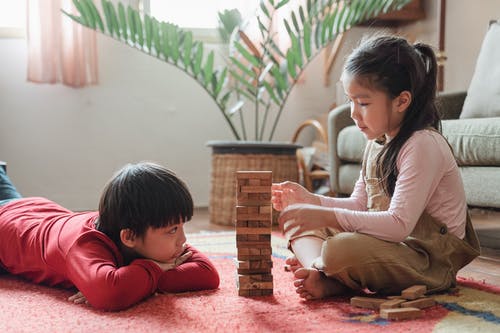
But, how exactly do parents create this type of ROOM decor FOR KIDS and THEIR LEARNING spaceS?
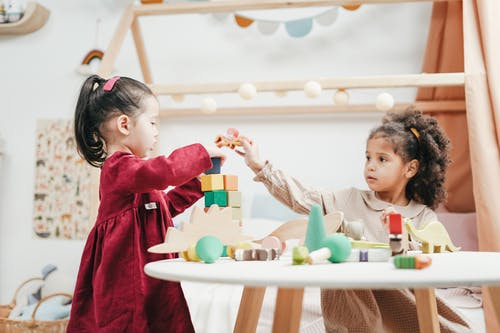
Use these 9 ideas for kid’s room decor to help your child get better at learning!!
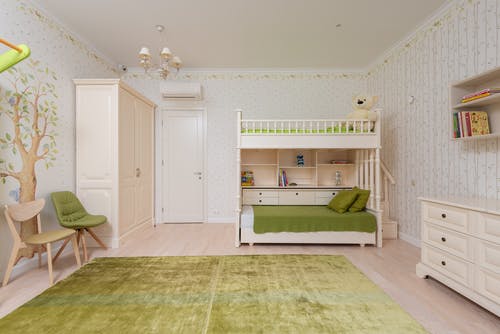
1. FOCUS ON COLORS
When it comes to room decor for kids, the color of the room is always the star.
Colors are the very first medium through which children learn.
The first thing they are introduced to before they start learning anything is colors.
Therefore, colors play a big role in the learning and cognitive development of children.
Every parent has gone through the phase of associating colors with their kid’s learning experiences.
Either through play, counting, or showing them objects that are around them.
For example, one of the first things we do is associate colors with objects; like ‘an apple is red in color’.
This helps the child remember the object ‘apple’ and the color of the apple.
So, essentially teaching the child the color of the apple helps the child remember the object and its color as well.
Slowly, as time goes by, children also learn to associate emotions, ideas, and feelings with colors too.

Hence, studies show that color plays an important role in learning and memory retention.
Today there are colors everywhere. Children are exposed to all types of colors that trigger different types of responses from their brains.
Colors allow them to learn about symbols, ideas, emotions and also help them communicate.
Therefore, it’s no wonder that preschool classrooms and learning spaces are all brightly colored.
Warm colors like off-white, oranges, and yellows attract a child’s attention and spark an interest in learning new things.
Additionally, it makes them feel secure, enhancing their learning capacities and encouraging techniques like memorization.
Moreover, Reds, dark pinks and brighter colors enhance creativity and a sense of vigilance
On the other hand, it is noted that primary and secondary school-aged kids prefer learning in calming and relaxed color tones like blues, greens, light purple, and pearl whites.
Whereas, older children tend to choose spaces that are a mix of warm and calm tones.
So, if you are designing a room for your child that will have a learning or homework space then, use the magic of colors to your advantage and create inspiring yet calming spaces for your child.
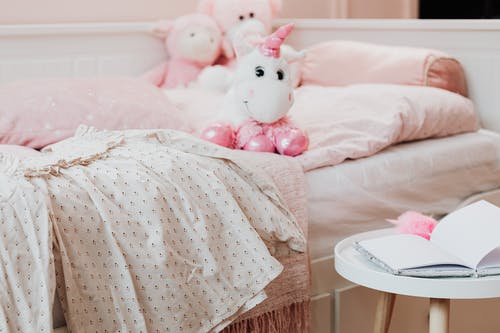
2. TAKE YOUR CHILD’S INTERESTS INTO MIND
One thing parents need to realize is that your child’s room is THEIR SPACE.
No matter how you like it, your children will be spending more time in that room than you are.
Therefore it is only just that they get to have a say in the room that is being designed.
Many parents design the room themselves and find that the child is not happy with the environment and ends up studying at the dining table.
Try having an objective conversation with your child with certain limits in terms of prices and design options.
And allow them to show you their interests and how they would like their room designed.
If not in terms of major design aspects, like construction, try giving into minor opinions and ideas like:
1. Color of the walls
2. Learning space furniture
3. Lighting
Allow them to create their own space and very often the kids will enjoy being in the spaces they have co-created.
This adds to the enjoyment of studying and learning in their own space as well.
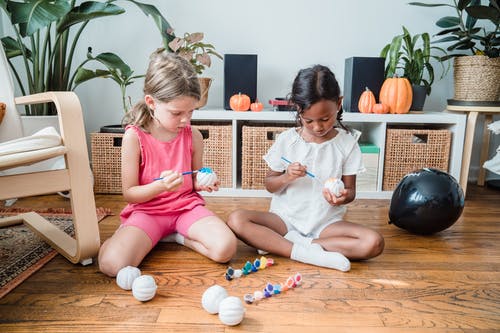
3. PLANTS AND VENTILATION!
A little bit of greenery never hurt anyone!
In fact, studies show that plants and greenery add a sense of calmness and facilitate a positive learning space.
New research has found that having plants or any form of greenery boosts a person’s mood and attention.
Therefore, having some house plants, succulent desk plants, and potted plants around or in your kid’s room is a splendid idea.
Moreover, since plants promote healthy attention spans and boost learning, they are an added advantage.
Ventilation is an important factor too.
A room needs enough ventilation and air to make sure it is fresh and aerated.
And a brush of fresh air always helps cheer up the gloomiest of days.
So, if you are building a home, make sure there is a window in your kid’s room.

4. ALL ABOUT CHAIRS AND POSTURE!
Every room has to have appropriate furniture to derive the full functionality of the room.
The kid’s room is no different.
Most times, since it is after all the kid’s room parents neglect the importance of a good desk and chair for their learning space.
It’s very common if as a parent you think about ‘how much time will he spend in the room’ or ‘he can use the spare chair from the dining area’
Or
the most common thought is ‘we will wait and see’
It is not done on purpose or with any ill will.
But knowing the ever-changing nature and unpredictability of children, sometimes we delay getting the perfect things out of fear that things may go to waste.
However, when it comes to a child’s learning space, despite what the child says always invest in a good, sturdy, comfortable table and chair.
It doesn’t have to be fancy, rather it has to be functional.
Parents must be aware of the importance of Ergonomics.
A compromised learning posture results in chronic long-term backaches and an unhealthy posture.
Today several children and young adults struggle with debilitating lower back pain and fluid retention in their knees.
This is due to straining their lower back while studying or working on laptops on beds, wooden stools, bean bags, steel or plastic chairs.
Provide the right chair and desk for your child to facilitate a pain-free and healthy posture that will on its own make learning better.

5. LIGHTS!
Every learning space needs to have optimum lighting for a child to learn comfortably.
This is such an integral part of any type of room decor for kids.
You can have all the modern technology in the room and it will all be a waste if the lighting in the room is not placed or wired correctly at the areas where it is needed.
Students spend hours pouring over books or screens to memorize and learn words, formulas, diagrams, and other material.
It would be unfair if they have to strain their eyes while doing that, resulting in many medical issues like:
1. Migraines
2. Poor Eyesight
3. Random headaches
Notice where your child reads the most or studies the most.
Commonly, lighting is needed on the side of the beds, on the desk, or on top of it.
Ask them if they have a specific area that they want well lit and illuminated.
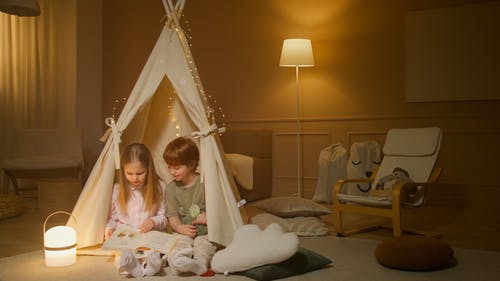
6. ORGANIZATION IN ROOM DECOR FOR KIDS
If you are the kind of parent that loves organizing and keeping things in their right places, then this point is for you.
Equip your room decor for the kid’s room with enough shelves, drawers, and cupboards to make sure everything has its place.
Children are famous for leaving clutter around them.
Having enough options to keep the kid’s room organized, makes tidying up a breeze.
Furthermore, sometimes if the kid’s room is small you can use some pieces of furniture in different ways to maximize the space.
As an example, you can design a bed with drawers on its side to give more storage space to store extra clothes, books, or even shoes.
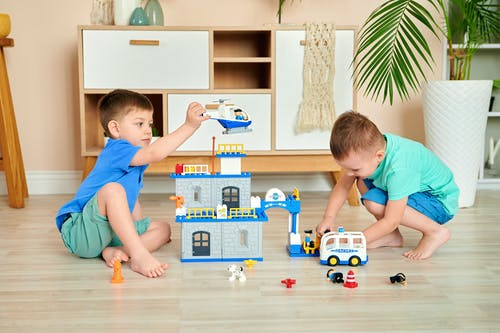
7. KEEP IT SIMPLE WITH ROOM DECOR FOR KIDS
Any type of decor for a kid’s room must be simple.
Overdoing the decor and filling the kid’s room always backfires and creates a mess.
Always remember that this is THEIR SPACE!
Filing it up with ornaments, cushions, wall hangings or even paintings will crowd the room robbing the kid’s room of its personality and freedom.
Its always wise to leave it simple, even if it means that there are pockets of empty space in the room.
Eventually, those will fill up too!
Empty spaces are open playgrounds for learning.
Especially when the kid’s room is for toddlers or preschoolers.
This age brings about a lot of self-learning through sensory, spatial, and motor skill development while the child explores a space.
For older children, most of the learning also happens through free and pretend play.
Hence keeping the design simple yet colorful will help the child learn better.
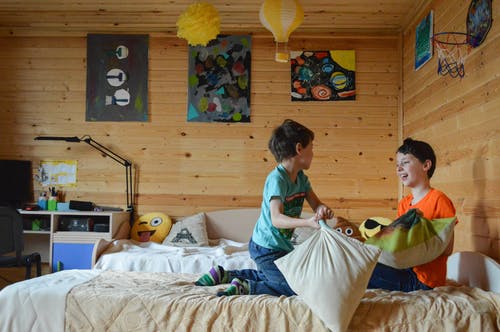
8. GIVE SPACE FOR CREATIVITY AND PLAY
Kids simply love the idea of getting THEIR OWN ROOM!!
A mix of emotions runs through any child’s mind when they are told that they are getting their own room.
A fuzzy bubbly mix of feelings of independence, authority over their things, their space to have fun, and something that they can cherish and call their own.
These are all signs that show that a kid’s room is a haven for kids to have fun.
It should help promote their creativity and individuality.
Of all the importance that parents give to learning spaces, some attention must be paid to a small space within the room that can harness their creativity too.
The best option would be to include a little space for creativity and fun into the learning space in the room.
Have flexible design options that include both learning and creativity spaces for the children to enjoy.
For example, you can try some of the options below:
Blackboard/ Whiteboard Wall – a part of an empty wall can be turned into a black or whiteboard for drawing or writing.
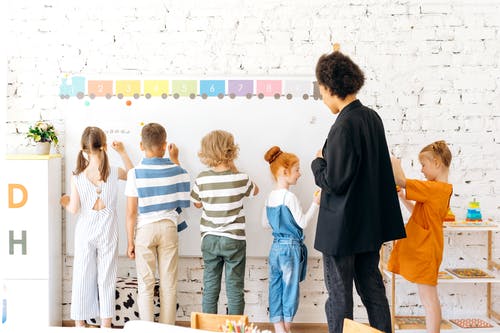
Memory walls – A fun and creative corner of the wall for kids to put up pictures of family, friends, or important milestones.
An Empty Wall – An empty wall in the room can be a great way for kids to paint their own room. Hand them a buck of paint and watch them go crazy with ideas!
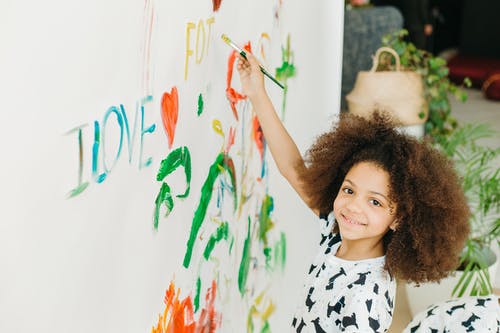
A Small Reading Nook – a comfy bean bag and a warm blanket will make reading a cozy fun time for the little reader in your family.
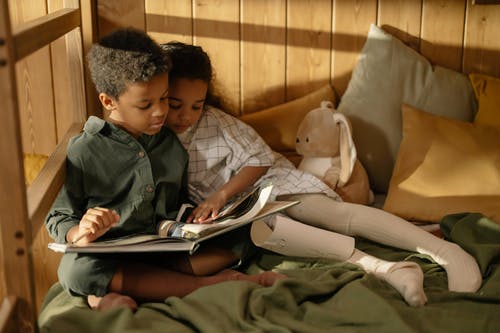
Music Corner- If your child is learning an instrument, a music corner is a splendid idea to help her practice and have fun at the same time. You can set up the musical instrument in a corner of the room and design a Music Corner!
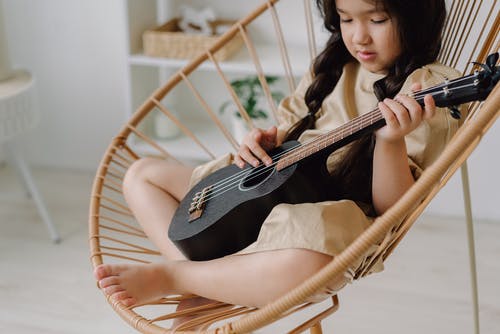
The Painter’s Easel – This corner will be perfect for the artists in the family. This corner will help the little painter to pick up a brush and start painting in their own room.
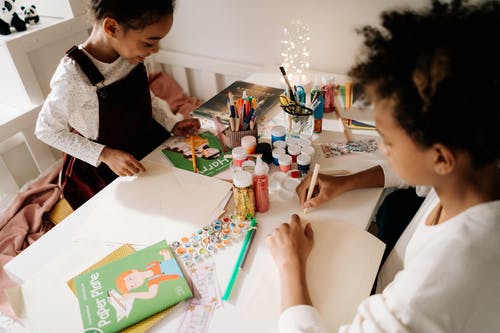
9. FUN WAY TO USE WALLPAPER IN ROOM DECOR FOR KIDS
Using wallpaper is all about adding texture to the walls.
Especially nowadays, wallpapers are in trend.
Parents use wallpapers around the house for decor in general and room decor for kids is no different.
Many believe that it adds a touch of class, texture, and gives a better impression than the normal painted walls.
Some design and art students also prefer wallpaper as it portrays their personality better and gives them a sense of inspiration.
Wallpapers are available in different types of color, design, and texture.
You can use them according to your preference and decide which wallpaper blends in with the rest of the room design.
Oftentimes, parents paint three walls of the room in paint and leave one wall empty to put a contrasting or textured wallpaper to give an artistic impression.

There you have it, 9 creative ways to design and transform your kid’s room decor and help them get better at learning within their own room!



